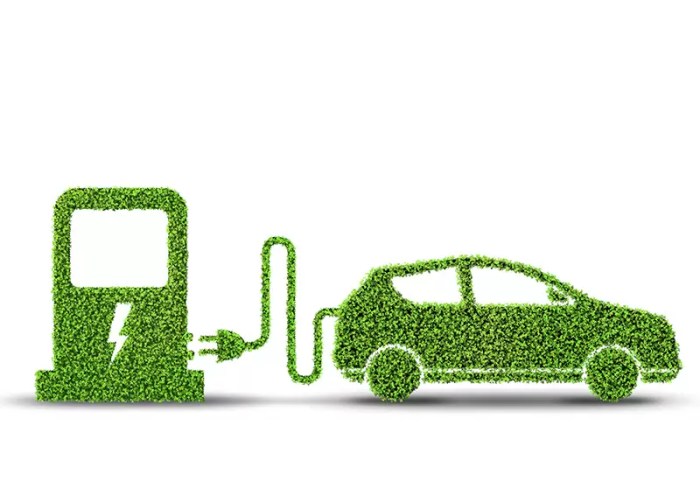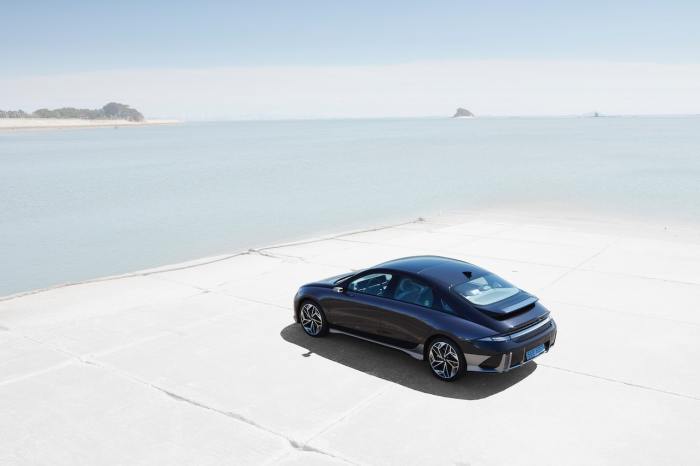The Urban Heat Island Effect
Imagine a scorching summer day. You drive through the city, and the heat radiating from the asphalt and buildings feels like a wave of warmth. This is the urban heat island effect, a phenomenon that makes urban areas significantly hotter than surrounding rural areas.
The urban heat island effect occurs due to the unique characteristics of urban environments. Buildings, roads, and other infrastructure absorb and retain more heat than natural surfaces like forests and fields. This heat is then released back into the atmosphere, creating a “heat island” in the city.
Traditional Vehicles and the Urban Heat Island Effect
Traditional vehicles, fueled by gasoline or diesel, contribute significantly to the urban heat island effect. The engines of these vehicles release heat into the atmosphere, adding to the overall temperature of the city. Additionally, the dark surfaces of vehicles absorb and retain heat, further intensifying the effect.
Examples of Cities Experiencing Severe Heat Island Effects
Several cities around the world experience severe heat island effects, leading to higher temperatures and increased energy consumption.
- Los Angeles, California: The city’s sprawling urban landscape, dominated by concrete and asphalt, experiences a significant heat island effect. Studies have shown that temperatures in downtown Los Angeles can be up to 10 degrees Fahrenheit higher than surrounding areas.
- Tokyo, Japan: With a dense population and extensive urban development, Tokyo experiences a pronounced heat island effect. The city’s concrete jungle and limited green spaces contribute to the high temperatures.
- London, England: Despite its relatively green spaces, London’s urban fabric contributes to a noticeable heat island effect. The city’s historic buildings and dense infrastructure trap heat, leading to warmer temperatures in the city center.
Electric Vehicles and Heat Reduction
Electric vehicles (EVs) are increasingly being recognized as a key solution to mitigating urban heat islands and reducing greenhouse gas emissions. Unlike traditional gasoline-powered vehicles, EVs don’t produce tailpipe emissions, which contribute significantly to urban heat.
Heat Reduction through Electric Vehicles
The absence of tailpipe emissions from EVs directly translates to reduced heat generation in urban environments. Internal combustion engines (ICE) in gasoline-powered vehicles release heat as a byproduct of combustion, contributing to the overall temperature rise in cities. EVs, on the other hand, rely on electric motors that generate significantly less heat, resulting in a cooler urban environment.
Impact of EV Charging Infrastructure on Urban Heat Levels
EV charging infrastructure, while crucial for EV adoption, can potentially contribute to urban heat if not carefully designed and implemented. Charging stations, especially those with high power outputs, generate heat during the charging process. The heat generated by these stations can impact the surrounding environment, potentially contributing to urban heat islands.
Comparison of Heat Generation by EV Charging Stations and Traditional Gas Stations
While EV charging stations do generate heat, they typically produce significantly less heat compared to traditional gas stations. Gas stations release heat from the storage and dispensing of gasoline, which is a highly flammable and volatile substance. The heat generated by EV charging stations is primarily from the electricity used for charging, which is generally more efficient and produces less heat than gasoline combustion.
EVs and Urban Planning: Use Of Electric Vehicles Can Help Make Cities Cooler
The integration of electric vehicles (EVs) into urban environments presents a unique opportunity to reshape city planning and create more sustainable, efficient, and livable spaces. By incorporating EV infrastructure and considering the impact of EV adoption on traffic patterns, urban planners can design cities that are better equipped to handle the challenges of a rapidly evolving transportation landscape.
Designing Cities for EV Adoption, Use of electric vehicles can help make cities cooler
A city optimized for EV adoption would prioritize the creation of a robust charging infrastructure, strategically placed to cater to the needs of residents and commuters. This involves integrating charging stations into existing urban fabric, such as parking garages, public spaces, and along major thoroughfares.
To ensure efficient traffic flow, cities can adopt smart traffic management systems that leverage real-time data from EVs to optimize signal timing and route guidance. This data can also be used to identify areas with high EV concentration and prioritize the installation of charging infrastructure accordingly.
Moreover, urban planners can incentivize the use of EVs by offering preferential parking arrangements, dedicated EV lanes, and access to HOV (High Occupancy Vehicle) lanes. These measures encourage EV adoption and promote sustainable transportation practices.
Benefits of EV Integration in Urban Planning
The integration of EVs into urban planning offers a multitude of benefits, significantly impacting the environment, public health, and overall quality of life.
| Benefit | Description |
|---|---|
| Reduced Air Pollution | EVs emit zero tailpipe emissions, contributing to cleaner air quality and reducing the harmful effects of pollutants like nitrogen oxides and particulate matter. This improvement in air quality can lead to significant health benefits, especially for vulnerable populations like children and the elderly. |
| Reduced Noise Levels | EVs operate significantly quieter than gasoline-powered vehicles, leading to reduced noise pollution in urban areas. This quieter environment can improve the quality of life for residents, particularly in densely populated areas. |
| Reduced Traffic Congestion | EVs can be integrated with smart traffic management systems, enabling real-time data collection and optimized traffic flow. This can lead to smoother traffic flow, reduced congestion, and shorter commute times. |
Promoting Public Transportation and Active Mobility
The adoption of EVs can encourage the use of public transportation and active modes of transportation, such as walking and cycling. By providing convenient and affordable charging options for public transit vehicles, cities can promote the use of electric buses and trains, reducing reliance on individual car ownership.
Moreover, the development of shared EV fleets can provide residents with flexible and convenient transportation options, reducing the need for personal vehicle ownership. This can lead to a decrease in the number of cars on the road, promoting pedestrian-friendly environments and encouraging active modes of transportation.
EV adoption can also incentivize the development of bike-sharing programs and pedestrian-friendly infrastructure, making it easier and safer for residents to choose sustainable transportation options.
The Role of Green Infrastructure
Green infrastructure, including trees, parks, and green roofs, plays a crucial role in mitigating the urban heat island effect, making cities cooler and more sustainable. These natural elements act as a cooling mechanism by providing shade, absorbing heat, and releasing moisture into the atmosphere.
Impact of Green Infrastructure on EV Charging Station Efficiency and Energy Consumption
The presence of green infrastructure can significantly impact the efficiency and energy consumption of EV charging stations. Trees and vegetation provide shade, reducing the heat load on charging stations, which in turn improves their efficiency and reduces energy consumption. This is especially important in hot climates where the heat can significantly impact the performance of charging equipment.
- Reduced Cooling Costs: Shade from trees can significantly reduce the need for air conditioning in charging stations, leading to lower energy consumption and operating costs.
- Improved Charging Efficiency: Cooler temperatures can improve the efficiency of EV batteries, resulting in faster charging times and increased range.
- Reduced Heat Stress: Green infrastructure can create a more comfortable environment for EV drivers and charging station operators, reducing heat stress and improving overall well-being.
Best Practices for Integrating Green Infrastructure with EV Charging Infrastructure
Integrating green infrastructure with EV charging infrastructure is essential for creating a sustainable and resilient urban environment. Here are some best practices:
- Strategic Placement of Trees: Trees should be strategically placed to provide shade for charging stations, especially during peak sun hours.
- Green Roofs: Green roofs can help reduce the heat load on charging stations and improve the overall thermal performance of the building.
- Permeable Paving: Permeable paving materials allow rainwater to infiltrate the ground, reducing runoff and promoting urban cooling.
- Water Features: Water features, such as fountains and ponds, can help cool the surrounding air and create a more pleasant environment.
- Native Plants: Planting native trees and shrubs can help reduce water consumption and create a more sustainable landscape.
“By integrating green infrastructure with EV charging infrastructure, cities can create a more sustainable, resilient, and livable environment for their residents.”
Policy and Incentive Programs
Cities around the world are actively implementing policies and incentive programs to promote the adoption of electric vehicles (EVs) and mitigate the urban heat island effect. These initiatives are crucial for achieving sustainable transportation systems and improving urban livability.
Successful Policy Initiatives
Policy initiatives are essential for encouraging the adoption of EVs. These policies aim to address barriers to EV ownership, such as cost, range anxiety, and limited charging infrastructure.
- Tax Credits and Rebates: Many governments offer tax credits and rebates to individuals who purchase EVs. For example, the United States federal government provides a tax credit of up to $7,500 for the purchase of a new EV. These incentives significantly reduce the upfront cost of EVs, making them more affordable and attractive to consumers.
- Charging Infrastructure Development: Governments are investing in public charging infrastructure to address range anxiety and encourage EV adoption. This includes installing charging stations in public spaces, workplaces, and residential areas. For example, the Netherlands has a comprehensive network of public charging stations, making it convenient for EV owners to charge their vehicles.
- Zero-Emission Vehicle Mandates: Some jurisdictions have implemented zero-emission vehicle (ZEV) mandates that require automakers to sell a certain percentage of EVs. California’s ZEV mandate, for instance, has been instrumental in driving EV adoption in the state. These mandates create demand for EVs, incentivize automakers to invest in EV production, and accelerate the transition to electric transportation.
Impact of Government Incentives on EV Adoption
Government incentives play a significant role in promoting EV adoption. Studies have shown that tax credits and rebates can significantly increase EV sales. For example, a study by the National Renewable Energy Laboratory found that the federal EV tax credit in the United States increased EV sales by 15% to 20%.
Government incentives are crucial for bridging the price gap between EVs and gasoline-powered vehicles, making EVs more accessible to a wider range of consumers.
Effectiveness of Different Policy Strategies
Different policy strategies have varying degrees of effectiveness in encouraging EV adoption.
- Tax Credits and Rebates: These incentives are generally effective in boosting EV sales, particularly in the early stages of adoption. However, their impact can diminish over time as the cost of EVs decreases and consumer awareness increases.
- Charging Infrastructure Development: Expanding charging infrastructure is crucial for addressing range anxiety and making EVs more convenient for consumers. However, the effectiveness of this strategy depends on the availability of charging stations in strategic locations and the ease of access for EV owners.
- ZEV Mandates: These mandates are effective in creating demand for EVs and driving innovation in the automotive industry. However, they can be controversial, as they require automakers to meet specific targets and can impact their profitability.
Use of electric vehicles can help make cities cooler – The transition to electric vehicles presents a unique opportunity to not only improve air quality but also create more comfortable urban environments. By strategically integrating EVs into our cities, we can pave the way for a future where cooler temperatures, cleaner air, and a more sustainable lifestyle go hand in hand. It’s a win-win for both the planet and our urban communities.
Switching to electric vehicles is a great way to reduce urban heat islands, but don’t think you need a supercomputer to enjoy the benefits. You can still experience the thrill of the open road with games like Mafia 3, which has recently had its PC requirements confirmed here. Whether you’re cruising through the virtual streets of New Bordeaux or the real streets of your city, remember that every step towards a greener future makes a difference.
 Standi Techno News
Standi Techno News

